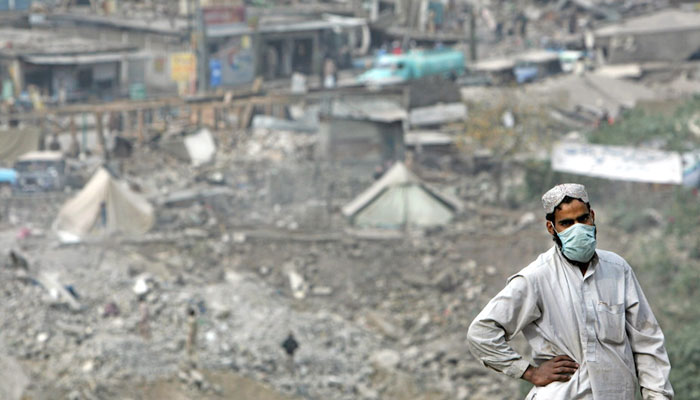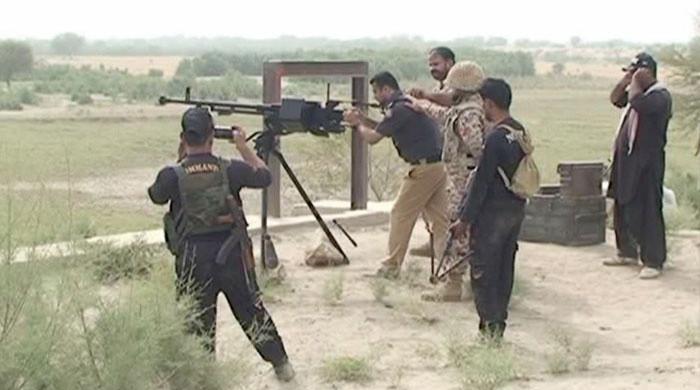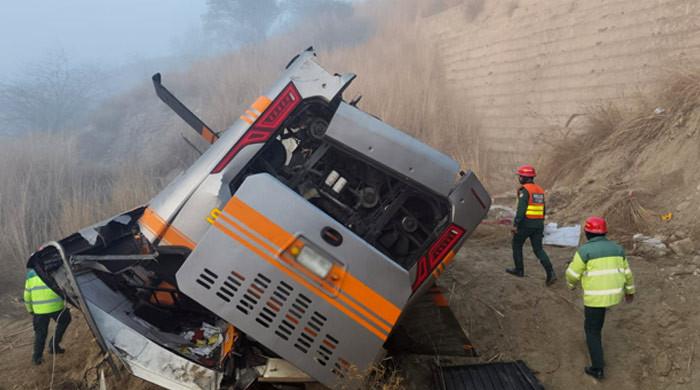Oct 8 earthquake: Tragedy struck 12 years ago today
The devastating earthquake, which continued for almost 45 seconds, caused massive destruction in the region
October 08, 2017
PESHAWAR: The 12th memorial of the devastating 2005 earthquake, which left nearly 100,000 people killed and hundreds of thousands homeless besides destroying the basic infrastructure, is being observed in Kashmir and adjoining areas today.
The day started with special prayers for the victims of the quake in mosques and at their graves followed by a one minute silence at 8am in remembrance of martyrs of the quake.
The main function of the day will be held at Uppar Ada presided over by Azad Jammu and Kashmir President Masood Khan and participated by acting prime minister Nasar Khan to high light the significance of the day.
The memorial activities were started on Saturday with a walk organised by State Disaster Management Authority (SDMA) led by SDMA Secretary Zaheer Quraishi aimed to create awareness among the masses about precautionary measures to meet any catastrophe or disaster.
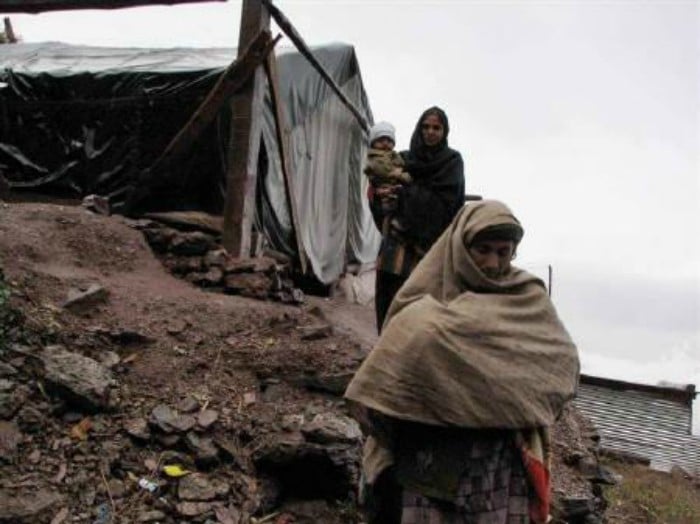
The walk was participated by a large number of people belonging to civil society, government officials, traders and others holding banners about preparatory measures to deal such situations and renewal of enthusiasm to restart life.
The activity was followed by a candle lightning activity at Noluchi bridge, built after the quake and considered as a symbol of reaffirmation and reconstruction after devastation in the town, to remember the movement and people who left their loved ones during the quake.
The earthquake left a trail of death and destruction, primarily in Azad Kashmir and Hazara Division of Khyber Pakhtunkhwa.
The 7.6 Richter-scale quake had killed more than 90,000 people and dislocated over 3.5 million.
Most of the victims were from poor families living in small and dilapidated houses and buildings.
Old mud houses caved in when the earthquake struck. Broken walls or collapsed roofs were reported from numerous villages in most of Khyber Pakhtunkhwa.
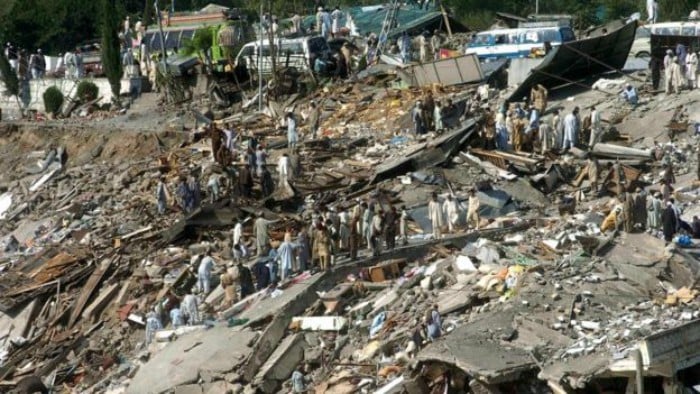
Panicked people came out of their houses, offices, markets, schools and other buildings as the powerful tremors continued for almost a minute. The aftershocks unnerved the people as they feared the buildings would collapse at any moment.
Most buildings were vacated immediately and people were seen standing on roads, streets and in lawns for an unusually long time.
The epicentre of the earthquake was where the Eurasian and Indian tectonic plates collided and was only 19 kilometres away from the capital of AJK, Muzaffarabad.
The devastating earthquake, which continued for almost 45 seconds, caused massive destruction in the region.
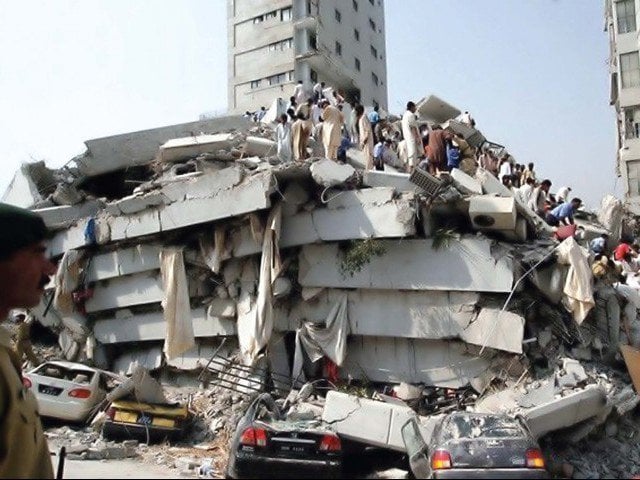
Almost 80 people were killed and more than 100 injured as a building of the Margalla Towers — a residential apartment complex in Islamabad's Sector F-10, collapsed owing to the earhquake.
This was the only building in the federal capital, located around 100 kilometres to Muzaffarabad, to have collapsed due to the earthquake.
Science behind the devastating earthquake
Geologists conclude that the subcontinent was once an island near Australia 65 million years ago. A massive earthquake caused it to collide with Asia, which created great mountain ranges such as the Himalayas, Karakoram and Hindu Kush. The confluence of these three mountain ranges is a place named Jaglot in Gilgit-Baltistan, where the River Indus and Gilgit meet. Some part of the state of Jammu and Kashmir is considered part of Central Asia, while the rest is considered part of the subcontinent. This was why the Neelum valley was largely spared from the destruction in the 2005 earthquake. In fact, not even a single house collapsed on the northern side of the valley. Apart from a few landslides – which cut off communication between the valley and the rest of the country – no major damage was caused.
The capital of AJK, Muzaffarabad is located on the crossing of two fault lines. In the north, a fault line named Himalayan Thrust is located while on the western side, Main Boundary Thrust is located. The 2005 earthquake occurred on the Himalayan Thrust and the epicentre of the quake lay only 19 kilometres northwest of the city.
Geologists say that ever since the confluence of the tectonic plates, both are moving towards each other, causing energy to be generated and when the energy finds its releasing point, it causes an earthquake. However, it is not necessary that an earthquake is only caused due to the release of this energy. Other factors could also affect the phenomenon.
In the 2005 earthquake, only five per cent energy caused by the collision of the tectonic plates was released, and the geologist had warned about it in the past. However, their warnings fell on deaf ears. If the houses in the affected areas had been constructed according to modern earthquake-proof techniques, then the death toll could have been a lot lower.
